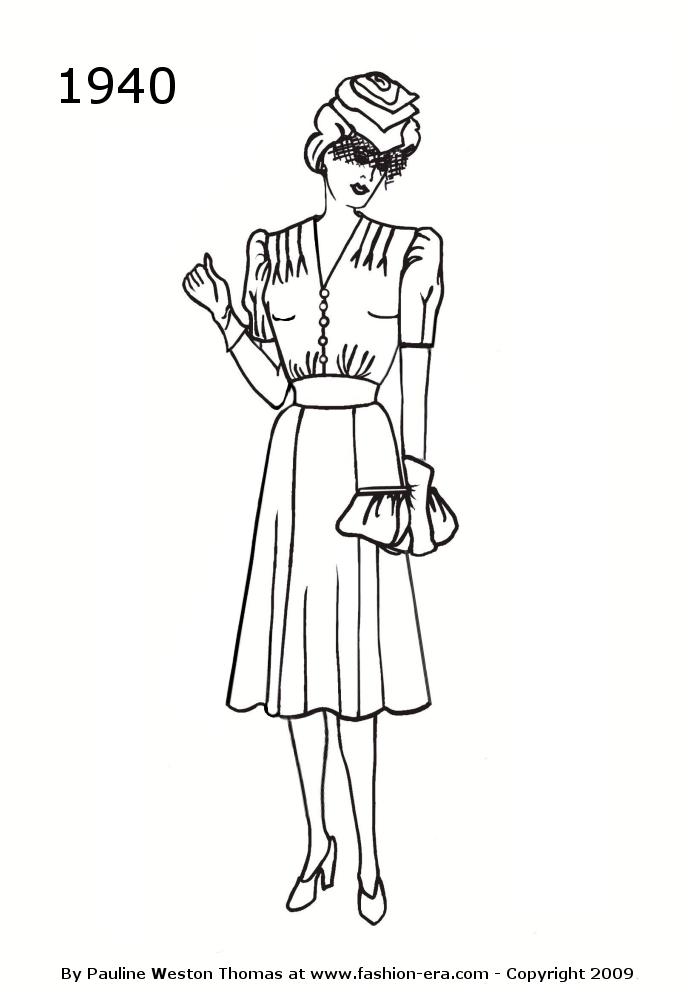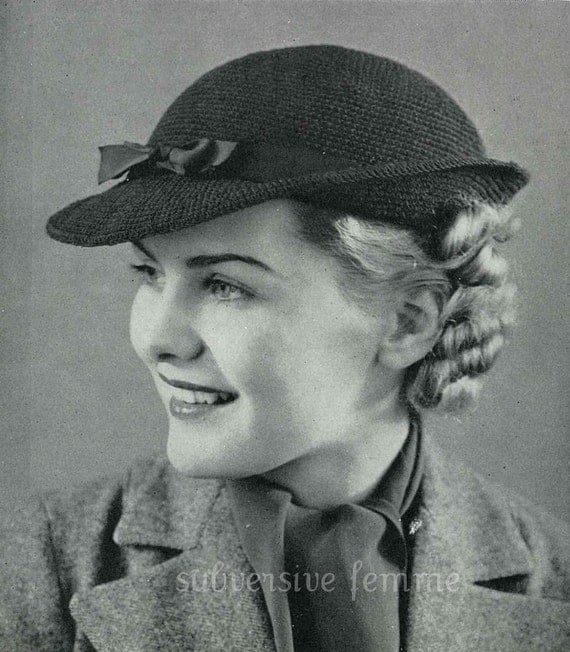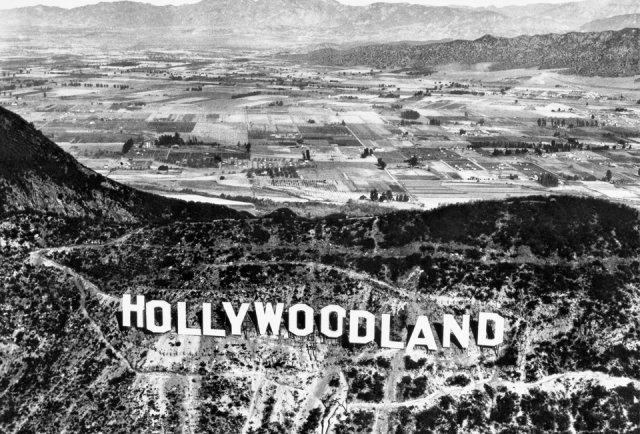By the early 1920's clothes became more relaxed, women started participating in sports which required a shirt in the style of clothing such as higher hemlines and the elimination of corsets. The 'flapper girl' look became the ideal and long hair with curls was replaced by short bobbed hair cut.
The end of World War 1
The end of world war one came with a complete change in people's attitudes, they began to look forward. Designers were using a more youthful and contemporary approach. The whole world modernised.
...........
During the war, as men went off to fight, women took on jobs formerly filled by men. Women and girls who previously worked as domestic servants took on jobs in munitions factories, performed administrative work, took work as drivers, nurses, and farm workers. They volunteered for organizations like the Red Cross, and joined the military.
Many of the occupations demanded the wearing of uniforms, including trousers. A military look crept into fashion designs as well with military style tunic jackets, belts, and epaulets.
A new image of freedom and self respect led women away from traditional gender roles. They drove cars and demanded the right to vote.
Before the war, Paris led the world of fashion. But due to the privations of war, and loss of communication between the US and Europe, New York emerged as a fashion leader with new designs based on a combination or femininity and practicality.
During World War I, people took to a plainer lifestyle. Women stopped wearing jewelry, and the lavish clothing of the Edwardian period fell by the wayside. As women dressed for new roles, gender dictated dress codes relaxed. Skirts became shorter, as they often do during wartime and colors became sober and muted.
A woman wearing the new style clothing due to the war.
...........
The hard war years, combined with the devastating effects of the 1918 flu pandemic brought the world to its knees. After Armistice, recovery was difficult. People felt crushed and cynical as they moved into peace time.
A new feeling of freedom mixed with disillusionment combined to create a new kind of culture - a live for today, devil-may-care society that led into the Roaring 20's and the distinctive look, sound, and fashion of the Jazz Age.
...........
Behavior and attitudes changed completely; everything was less formal, clothes became casual, young people had more freedom, girls smoked in public, cut off there hair, wore make-up and shortened there skirts. The 'Flapper Girl' Fashion was born...
The Flapper Girl
Flapper fashion embraced all things and styles modern. A fashionable flapper had short sleek hair, a shorter than average shapeless shift dress, a chest as flat as a board, wore make up and applied it in public, smoked with a long cigarette holder, exposed her limbs and epitomised the spirit of a reckless rebel who danced the nights away in the Jazz Age.
..........
High fashion until the twenties had been for the richer women of society. But because construction of the flapper's dress was less complicated than earlier fashions, women were much more successful at home dressmaking a flapper dress which was a straight shift. It was easier to produce up to date plain flapper fashions quickly using flapper fashion Butterick dress patterns.
The flapper fashion style flourished amid the middle classes. The really rich still continued to wear beautifully embellished silk garments for evening.
Flapper style.
...........
Womens Underwear
A key development in women's undergarments was introduced by a new York debutante named Mary Phelps Jacob. Working under the name Caresse Crosby, Jacobs designed one of the first modern bras. Previously, the breasts had been pushed up by corsets. The new design was soft and boneless with shoulder straps that suspended the breasts from above.
Corsets were not totally abandoned but given greater flexibility for comfort. The Spirella Corset offered a greater range of movement than the old fashioned type and purported to improve posture to benefit overall health. The makers of Spirella Corsets send a representative to your home to measure for a personal fit.
...........
The new shape
Female clothes became looser and more shapeless in fit. The bust was suppressed, the waist disappeared, the shoulders became broader and hair shorter and shorter. Narrow boyish hips were preferred. The silhouette emphasised a flattened chest and womanly curves were eliminated as the line became more simplified.
The slender flat-chested tanned body and face of a 15 year old became the desired silhouette of the bright young things of the 1920s. Health and beauty clubs helped women refine their silhouettes whilst getting fitter and healthier.
............
Hollywood
Hollywood was an ever widening hub of celebrity, debauchery and decadence in the Roaring Twenties.
It was both a town of wealth and glamor and a seedy place where brothels posed as fake acting schools and sucked in attractive young girls who traveled to California with dreams of stardom and fortune in their eyes.
Very few wanna-be actors and actresses "made" the silver screen, others were plucked off by 9 to 5 jobs, some became prostitutes, others just lived their lives waiting for the call from general casting.
Hollywood Boulevard was lit up, as always. The Hollywoodland sign was lit up to announce right where to go.
...........
Theda Bara & Pola Negri
Pola Negri was a Polish stage and film actress who achieved worldwide fame during the silent and golden eras of Hollywood and European film for her tragedienne and femme fatale roles. She was the first European film star to be invited to Hollywood, and became one of the most popular actresses in American silent film. She also started several important women's fashion trends that are still staples of the women's fashion industry.
Pola Negri
Theda Bara was an American silent film and stage actress. Her femme fatale roles earned her the nickname "The Vamp" (short for vampire). The term "vamp" soon became a popular slang term for a sexually predatory woman . Bara, along with the French film actress Musidora, popularized the vamp persona in the early years of silent film and was soon imitated by rival actresses such as Nita Naldi and Pola Negri.
. Bara, along with the French film actress Musidora, popularized the vamp persona in the early years of silent film and was soon imitated by rival actresses such as Nita Naldi and Pola Negri.
Theda Bara
..........
Bias Cut
The "bias-cut" is a technique used by designers for cutting clothing to utilize the greater stretch in the bias or diagonal direction of the fabric, thereby causing it to accentuate body lines and curves and drape softly. For example, a full-skirted dress cut on the bias will hang more gracefully or a narrow dress will cling to the figure. Bias-cut garments were an important feature of the designs of Madeleine Vionnet in 1920s and 1930s and bias-cut styles are revived periodically. In the Middle Ages, before the development of knitting, hose were cut on the bias in order to make them fit better.
A bias cut gown
..........
Cubism
Cubism is an early-20th-century avant-garde art movement pioneered by Georges Braque and Pablo Picasso, joined by Jean Metzinger, Albert Gleizes, Robert Delaunay, Henri Le Fauconnier, Fernand Léger and Juan Gris that revolutionized European painting and sculpture, and inspired related movements in music, literature and architecture. Cubism has been considered the most influential art movement of the 20th century.
In Cubist artwork, objects are analyzed, broken up and reassembled in an abstracted form—instead of depicting objects from one viewpoint, the artist depicts the subject from a multitude of viewpoints to represent the subject in a greater context.
Coco Chanel used cubist colors and forms in creating women’s fashions, which she dressed with art deco jewelry.


..........
Exhibition of the decorative arts
The museum collection was originally founded in 1905 by members of the Union des Arts Décoratifs. The architect was Gaston Redon. It houses and displays furniture, interior design, altar pieces, religious paintings, objets d'arts, tapestries, wallpaper, ceramics and glassware, plus toys from the Middle Ages to the present day.
The collection is composed of French furniture, tableware, carpets, and a large number of glass pieces. It includes numerous works in the Art Nouveau and Art Déco styles. The museum's deep holdings range back to 13th-century Europe.
By the 1920s, the effects of art deco style cubist painting were seen in advertising and product designs.
...........
Dance
Ragtime which had been popular during and after the war was suited to the new music tempos and so it flourished. Old favorites like the Waltz and Foxtrot remained popular. Young people added their own variations to traditional dance styles - like toddling to the Foxtrot. Dances like the Tango and Charleston received a huge boost in popularity when featured in movies by stars like Rudolph Valentino and Joan Crawford. Freed from the restrictions of tight corsets and the large puffed sleeves and long skirts that characterized dress during the late Victorian era, a new generation of dancers was swaying, hugging, and grinding to the new rhythms in dances.
While the new dances appealed to the youth they were not so popular with the older, more conservative generation who saw jazz in particular as decadent. This was partly due both to the nightclubing and parties that were the venues for the dancing, and to the style of dance itself.
Young people introduced their own fashion styles and so the "flapper" and "sheik" came into existence. Young women with short bobbed hairstyles, close fitting hats and short skirts were referred to as flappers, and young men with ukeleles, racoon coats and bell-bottom trousers were called "sheiks".
Dancing began to actively involve the upper body for the first time as women began shaking their torsos in a dance called the Shimmy. Young people took to throwing their arms and legs in the air with reckless abandon and hopping or "toddling" every step in the Foxtrot, and soon every college student was doing a new dance which became known as the Toddle.
..........
Menswear
In menswear there were two distinct periods in the 1920s. Throughout the decade, men wore short suit jackets, the old long jackets being used merely for formal occasions. In the early 1920s, men's fashion was characterized by extremely high-waisted jackets, often worn with belts. Lapels on suit jackets were not very wide as they tended to be buttoned up high. This style of jacket seems to have been greatly influenced by the uniforms worn by the military during the First World War. Trousers were relatively narrow and straight and they were worn rather short so that a man's socks often showed. Trousers also began to be worn cuffed at the bottom at this time.
By 1925, wider trousers commonly known as Oxford bags came into fashion, while suit jackets returned to a normal waist and lapels became wider and were often worn peaked. Loose-fitting sleeves without a taper also began to be worn during this period. During the late 1920s, double-breasted vests, often worn with a single-breasted jacket, also became quite fashionable. During the 1920s, men had a variety of sport clothes available to them, including sweaters and short trousers, commonly known as knickers. For formal occasions in the daytime, a morning suit was usually worn. For evening wear men preferred the short tuxedo to the tail coat, which was now seen as rather old-fashioned and snobby.
Men in the usual oxford bags, bow ties and waist length jackets.
Men’s fashion also became less regimented and formal. Men favored short jackets with two or three buttons rather than jackets with long tailcoats as well as pinstriped suits. Casual-wear for men often included knickers, short pants that came to the knee.
Men's hats were usually worn depending on their class, with upper class citizens usually wearing top hats or a homburg hat. Middle class men wore either a fedora, bowler hat or a trilby hat. During the summer months a straw boater was popular for upper class and middle class men. Working-class men wore a standard newsboy cap or a flat cap.
mens hats
..........
Coco Chanel
Chanel set the stage for modern fashion by creating a signature style, a brand awareness, and a social buzz around herself like no one had ever done before.
Chanel saw the needs and desires of women and designed her fashion around what women wanted. . .
Women wanted freedom from the constraints society & fashion had placed upon them. Women wanted beauty without shackles.
Chanel redesigned the young woman's role within society, making them more beautiful while, at the same time, separating them from the hoards of traditional "nobodies".
She came from an impoverished childhood and private Catholic school upbringing to become the archetypal modern woman.
Chanel's designs lent a previously unknown practicality to women's fashion.
Her elegant and versatile fashions were made from durable fabrics usually reserved for men's work clothes. Chanel stripped fashion of excess material, frilly lace, and the constraints of the past.
Rather than using more fabric, Chanel used beads and embroidery to decorate her clothes.
Chanel's "illusion jewelry": beautiful gemstone necklaces and other accessories fleshed out her "simple modern" look.
hanel's "Garconne Look" was quickly adopted in Britain and the U.S. and has broadly been called the "flapper look".
The Flapper look was defined by it's "masculine" influence.
Chanel used male motifs like sailors outfits and mechanic's dungarees as inspirations for her fashions.

..........































